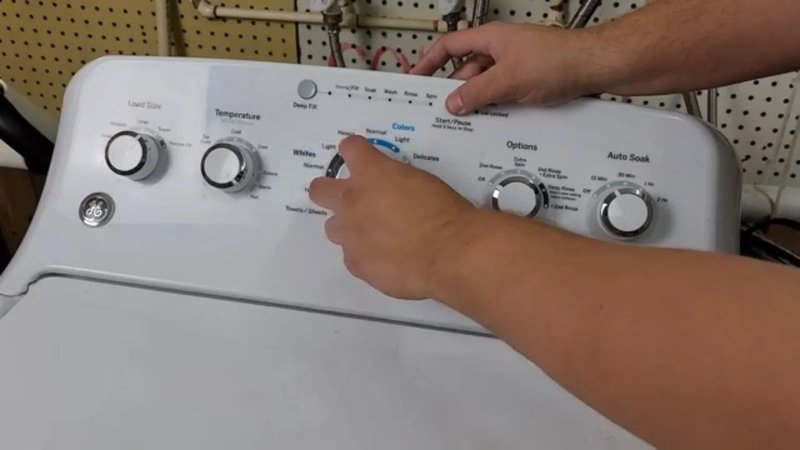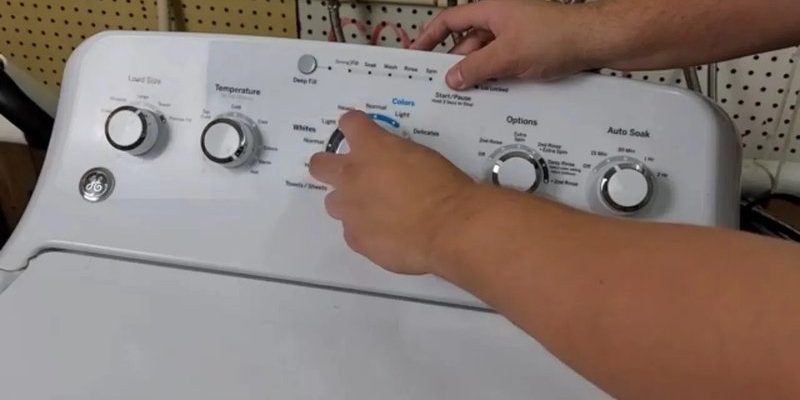
Now, you might be wondering why this imbalance occurs. Well, it’s pretty straightforward. Sometimes, the clothes might have clumped together, or perhaps there aren’t enough clothes in the drum to distribute the weight evenly during spinning. The machine senses this imbalance and decides it’s safer to stop rather than continue spinning erratically. It’s essentially your washing machine’s way of saying, “Hey, I need a little help here!” Learning how to reset it after seeing this error doesn’t just save time—it also extends the life of your machine. Let’s dive into how you can fix it and get back to doing laundry without a hitch.
Understanding the UE Error Code and Its Causes
When your GE washing machine flashes the “UE” error, it’s communicating that the load inside the drum is unbalanced. You might think, “Why does it care so much about balance?” Well, the balance is crucial for effective spinning. If the machine spins with an uneven load, it can vibrate excessively, making a racket and potentially damaging itself over time. Think of a washing machine like a dancer, gracefully twirling—when balanced. If off-kilter, it stumbles and thrashes about.
The causes of this imbalance are usually straightforward. One common reason for the “UE” error is simple overloading. If you’ve crammed too many clothes into the drum, there’s just no room for these items to move freely, leading to an uneven distribution. Alternatively, underloading can be an issue too. A single heavy item, like a blanket, on its own can end up on one side of the drum, causing uneven weight distribution. Another factor could be clothing types. Mixing heavy towels with delicate garments can create weight disparities that throw off the balance.
So, what happens if you don’t address this issue? Well, the machine might continue to halt mid-cycle, wasting water and energy while leaving you with a pile of wet clothes. Worse, persistent imbalances can put undue strain on the drum bearings and motor over time. Therefore, understanding this error and correcting it not only fixes the immediate problem but also helps maintain your appliance in the long run.
Steps to Reset Your GE Washing Machine
So, you’re faced with the “UE” error code, and you’re ready to tackle it like a pro. Here’s the deal: resetting your machine is simpler than you might think. First things first, pause the washing cycle. On most GE models, you can do this by pressing the “Start/Pause” button. Once the machine is paused, you’ll need to open the door. Sometimes the door might be locked; if so, give it a minute—some machines take a moment before letting you open it.
With the door open, it’s time to address the load. Check inside and see if the clothes are tangled or bundled up on one side of the drum. If they are, redistribute them by hand. Make sure heavier items are separated and interspersed with lighter ones. If the machine was too full, consider removing a few items to allow better movement. Conversely, if the load was too small, you might want to add more items to balance things out. Once you’re satisfied with how the load looks, close the door securely.
Now, restart the machine. On many models, this involves simply pressing the “Start” button again. The machine should resume its cycle, and ideally, the “UE” error won’t reappear. However, keep an eye on it for a bit. If the issue persists, it’s worth double-checking the alignment and level of the machine itself on the floor. Sometimes the surface may not be even, contributing to the imbalance.
Preventing the UE Error in the Future
While it’s great to know how to reset your washing machine when the “UE” code pops up, it’s even better to prevent it from happening in the first place. How can you do this? By ensuring that you load your machine correctly every time. Think of loading your washing machine like packing a suitcase—too much, and you can’t close it; too little, and everything shifts around. Aim for a balanced load where clothes can move around freely but still provide some resistance.
A good rule of thumb is to leave a hand’s width of space between the top of your clothes and the top of the drum. This space allows items to tumble around without causing the dreaded imbalance. Mixing different types of clothing is also key—alternate heavy and light items to create a more balanced load. If you’re washing something particularly heavy, like a comforter, consider adding a few towels to help distribute the weight more evenly.
Another tip is regular maintenance of your machine. Over time, components can loosen or wear down, impacting balance. Check for level placement occasionally and address any wear promptly. By taking these preventative steps, you can enjoy smoother laundry days with fewer interruptions, ensuring your machine runs efficiently for many years to come.
When to Call a Professional
Sometimes, no matter how carefully you try to balance the load, the “UE” error persists. If you’ve tried redistributing the clothes and ensuring the machine itself is level but still face this issue, it may be time to consider other possibilities. There could be a more complex problem at play, like an issue with the drum suspension or the motor itself. These aren’t things you’d want to tinker with if you’re not familiar with appliance repair.
You might be thinking, “Do I really need to call someone?” If the error is frequent and disruptive, or if you’re hearing unusual noises, it’s wise to seek professional help. An appliance technician can diagnose underlying problems, check for wear and tear on crucial parts, and make necessary repairs. This might feel like an added expense, but in the long run, it can save you from bigger, costlier problems.
Lastly, remember that regular professional maintenance can be proactive. Much like a car needs routine check-ups, so do our appliances. So, if you’re ever in doubt about the health of your washing machine, there’s no harm in calling in the experts. They can keep your washing machine spinning smoothly and help avert those annoying “UE” interruptions.
